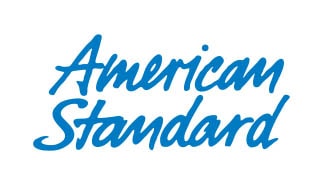Published on
November 30th, 2021How a Pressure Regulator Works: Getting the Ideal Water Pressure for Your Property
If you have high water pressure where your water supply enters your property, your plumber may have suggested a pressure regulator. If you’re curious about how a pressure regulator works and if your property needs one, this post is for you. You’ll learn how this simple device can protect your plumbing and why our experts at Sanitary Plumbing have installed them in many New York City homes and apartment buildings.
What Is a Pressure Regulator?
Pressure regulators control the flow of water to your property
A pressure regulator, also called a pressure reducing valve or PRV, is a device designed to reduce the water pressure coming from your main water supply.
High pressure once water enters your property can wreak havoc on your plumbing system. It can wear out pipes faster and even force connections and joints to burst, causing water damage. You may have already seen the effects of high water pressure with shower valves that need frequent repairs and cause a constantly dripping spigot. If your appliances that require water are older, they may not have built-in pressure regulators like more modern versions. They can be subject to breaking down from high pressure, too.
Does Your Property Need a Pressure Regulator?
Measure your current water pressure to determine need
In New York City, the maximum water pressure entering a building is typically just under 60 psi, although it varies from neighborhood to neighborhood and can be higher in some spots.
Separately, in many buildings over 6 stories, the water may enter your apartment from the tank on the roof. If you are located on a lower floor in this type of application, the water pressure — through gravity — can exceed the recommended pressure.
Most residential plumbing systems operate best at about 50 psi, so many are vulnerable to high pressure around the city without pressure regulators in place.
You can judge whether your property needs a pressure reducing valve in several ways. You or a licensed plumber can precisely measure the water pressure. This is accomplished with a pressure gauge that is attached to a local connection.
You can sometimes see the pressure is too high just by turning on your taps. If you barely open a shower valve and water comes roaring out of the spigot, the pressure is probably too high. Likewise, you may have experienced some of the plumbing malfunctions mentioned above, in conjunction with observing water moving at high speed from your faucets.
How a Pressure Regulator Works
A simple design can save your plumbing
A water pressure regulator is typically positioned between your main water shut-off valve and the pipe supplying water to the property. There are several variations on the basic design, but the most common one has a screw on top that connects with a spring-loaded diaphragm inside the regulator. The diaphragm automatically opens or closes in accordance with the pressure coming from the water supply on the street side.
If, for example, the water pressure is high coming into your property, the diaphragm constricts to reduce pressure. If pressure drops, which can happen with an open hydrant in the area, the diaphragm widens to allow more water in to meet minimum pressure needs. This mechanism is ideal in places like New York City, where pressure is generally high but can suddenly decrease due to circumstances beyond your control. You get the best of both worlds with a pressure reducing valve — your pipes are protected, but you’re not beholden to low pressure when municipal pressure changes.
Who Should Install a Pressure Regulator?
Leave this job to the pros
Installing a new pressure regulator is a job that’s usually best left to an experienced plumber, as we may need to work on your water line or move your main water valve. When our technicians at Sanitary Plumbing place a pressure regulating valve, we ensure it’s done properly and test the setting so you know it’s correct under a variety of conditions. If it’s not perfect, we will make the necessary adjustments for better pressure control. We also make sure the quality of the regulator is good, so you get the longest use out of it.
Do you know or suspect you have dangerously high water pressure in your property? Let Sanitary Plumbing install a pressure regulator for you; call us today at 212-734-5000.








